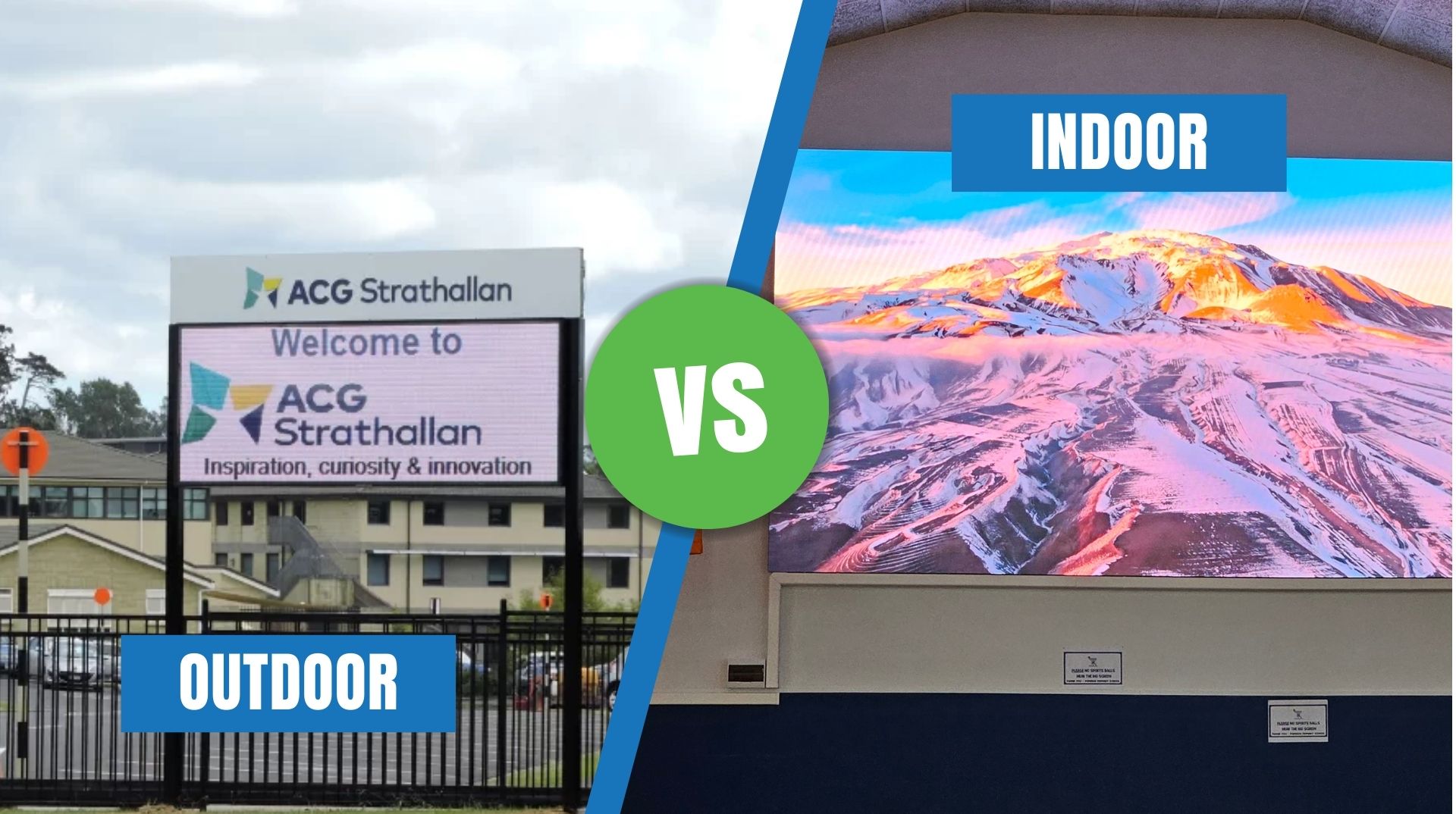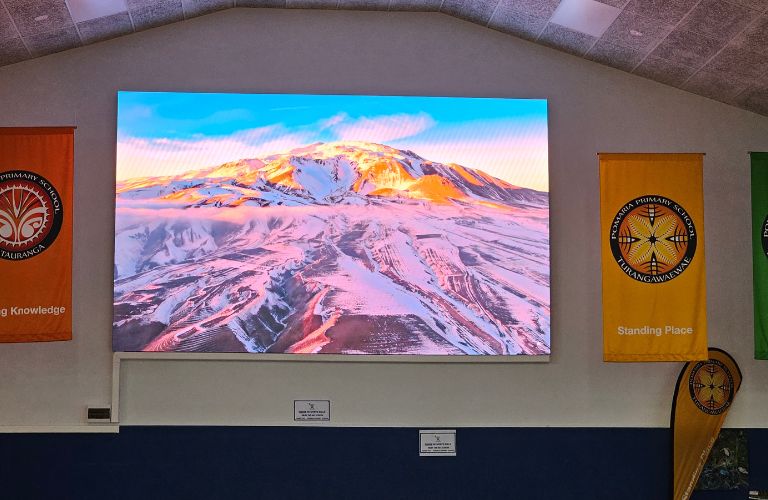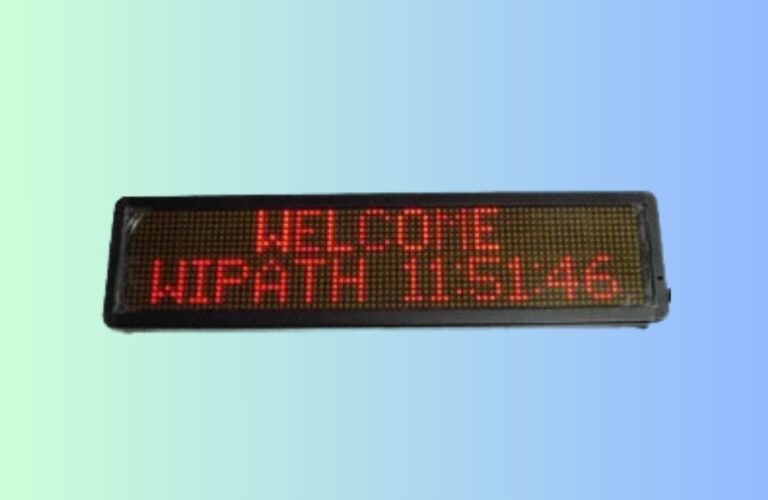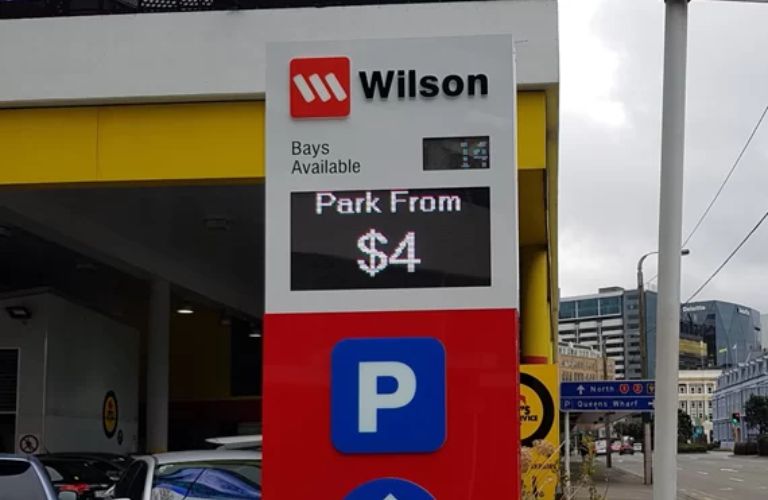
23 May Indoor vs Outdoor LED Signage: What’s Best for Your Business?
In today’s fast-paced digital world, visual communication is a vital tool for engaging customers and enhancing brand visibility. Whether you’re running a retail store, hospital, stadium, or shopping mall, LED signage offers a powerful way to convey your message effectively.
However, not all LED displays are created equal. The choice between indoor and outdoor LED signage depends on several factors, including usage, location, and visibility requirements. In this blog, we’ll break down the differences between the two, their unique advantages, and how to choose the right solution for your business.
What Is Indoor LED Signage?

Indoor LED signs are designed for enclosed spaces and are best suited for:
- Airports
- Retail stores
- Conference rooms
- Hospitals
- Hotels
- Shopping centres
These displays are typically smaller in size and have a higher pixel density, ensuring crystal-clear visuals even at close range. They are ideal for showing:
- Promotions and advertisements
- Wayfinding directions
- Live event streaming
- Information updates
What Is Outdoor LED Signage?

- High Resolution & Pixel Clarity
- Delivers crisp visuals perfect for indoor environments.
- Customizable Content
- Brands can tailor messages, colours, and designs to match their identity.
- Energy Efficiency
- Consumes less power than traditional lighting solutions, saving costs in the long run.
- Durability
- Long-lasting technology built for continuous indoor use with minimal maintenance.
- Weather-Proof by Default
- Installed indoors, so there’s no exposure to weather damage or UV radiation.
Top Benefits of Indoor LED Displays

- High Resolution & Pixel Clarity- Delivers crisp visuals perfect for indoor environments.
- Customizable Content- Brands can tailor messages, colours, and designs to match their identity.
- Energy Efficiency- Consumes less power than traditional lighting solutions, saving costs in the long run.
- Durability- Long-lasting technology built for continuous indoor use with minimal maintenance.
- Weather-Proof by Default- Installed indoors, so there’s no exposure to weather damage or UV radiation.
What Is Outdoor LED Signage?

Outdoor LED signs are built to perform in open-air conditions. They’re commonly installed in:
- Public spaces
- Outside shopping malls
- Stadium exteriors
- Roadsides and highways
- Outside retail stores
These signs have a lower pixel density (since they’re viewed from farther away) and are larger, making them visible even from a distance.
Advantages of Outdoor LED Displays
- Wide Visibility- Easily grabs attention from passersby, drivers, or pedestrians.
- Bright & Bold Display- High brightness and anti-reflective features make content visible even in daylight.
- Weather Resistance- Built to withstand rain, wind, heat, and other harsh elements.
- Powerful Marketing Tool- Perfect for promotions, announcements, and brand awareness in high-traffic areas.
- Immersive Viewer Experience- Motion graphics, videos, and real-time updates keep audiences engaged.
Which One Should You Choose – Indoor or Outdoor LED?
Choosing between indoor and outdoor LED signage depends on the following:
Your Business Type
- Retail or Grocery Store: Indoor signage for product promotions.
- Parking Facility: Indoor signs for directions and instructions.
- Gaming Zones & Commercial Properties: Outdoor signs for maximum exposure.
Placement Location
- If your audience is inside your building, go with indoor signage.
- If you want to attract passersby or foot traffic, opt for outdoor signage.
Budget & Visibility Goals
- Indoor signs are generally more affordable but have limited reach.
- Outdoor signs offer broader visibility but may require a higher investment.

No Comments